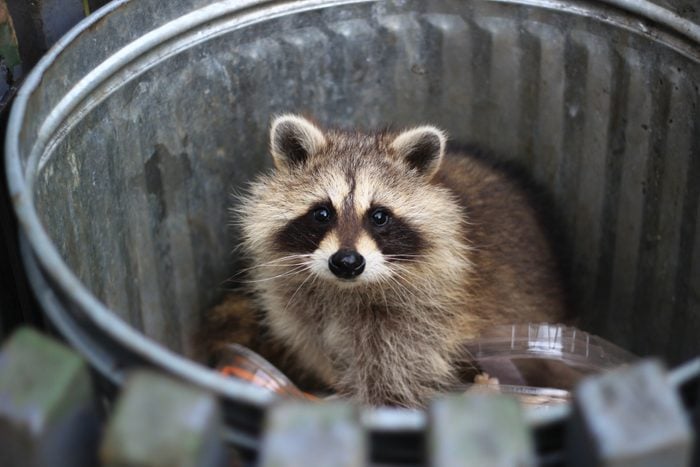Keep your home and family safe from raccoons by knowing what to look for.
8 Warning Signs You Have a Raccoon Problem
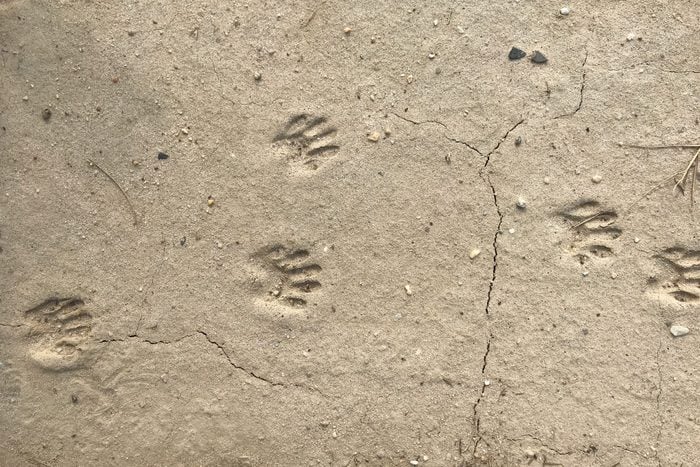
Paw Prints
Paw prints are the most obvious sign of a raccoon infestation in or around your home. Raccoon paws have five finger-like toes with a diameter of two to three inches across, according to Alderleaf Wilderness College. Raccoon trails are a unique pattern. Step lengths are typically 10 to 18 inches, according to Alderleaf Wilderness College.
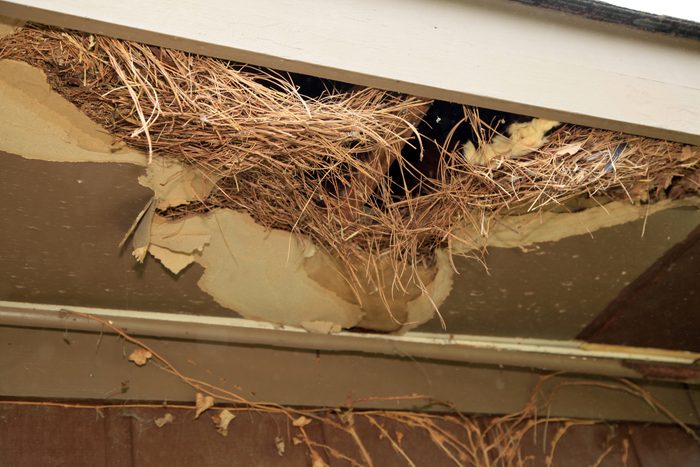
Exterior Home Damage
Raccoons will leave their mark if they’re trying to find a way into your home. Common areas they’ll damage include the roof, soffit, attic and basement windows/doors and crawl spaces. They might also leave scratch marks on your woodwork.
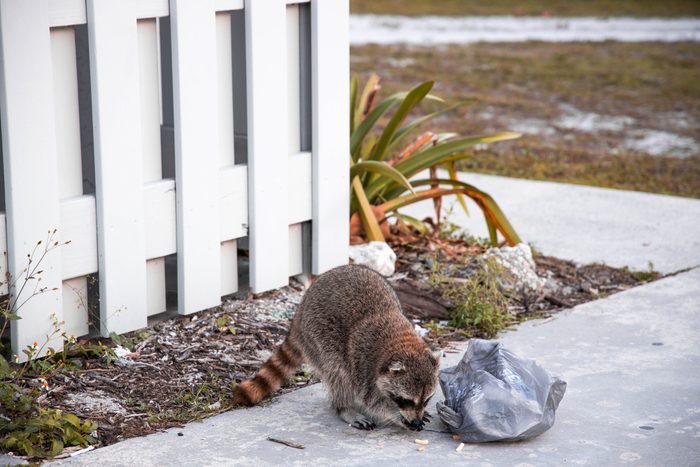
Stray Garbage or Food Scraps
Garbage in your yard could just be litter, but it’s also a common sign of raccoons. Raccoons are lazy and a trash can is the easiest place they can get food, according to Westchester Wildlife.
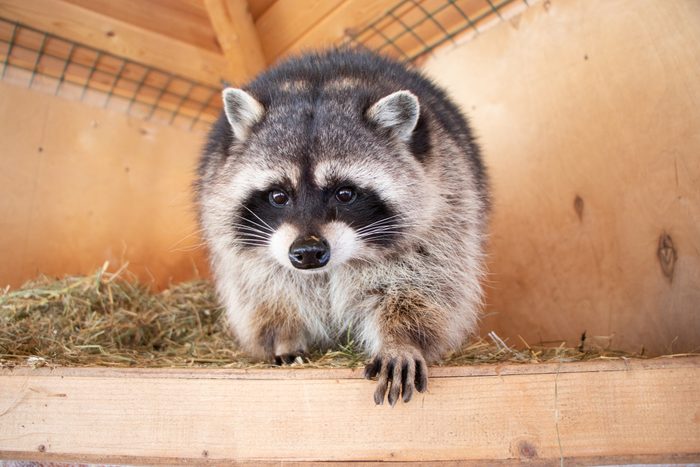
Nesting Materials
Raccoons build nests for housing and safety. Common nesting materials include yard debris like twigs, leaves, long grasses, and hay. They also use manmade products like fabric, paper and housing materials.
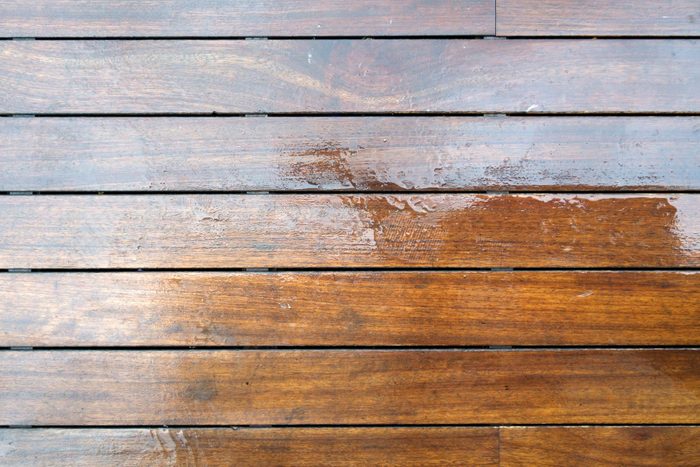
Feces or Urine
Raccoons have no shame turning your home or yard into their personal lavatory. Their droppings don’t look like deer or other common pests. Typically they’re dark and tubular with blunted ends, according to Critter Control. It’s common to find their excrement near other signs, like nesting materials or exterior home damage.
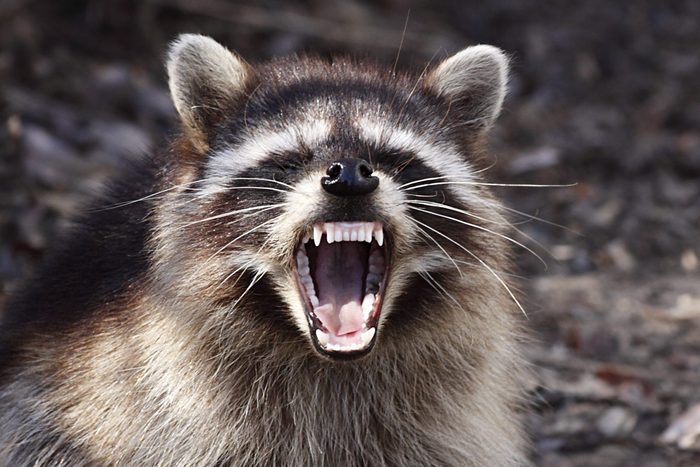
Scratching or Scurrying Noises
Hear scurrying in the attic? It might mean you have a mouse infestation — or something larger, like a raccoon. Common raccoon sounds include scurrying, purring, chittering, growling and snarling, according to Trutech Wildlife.
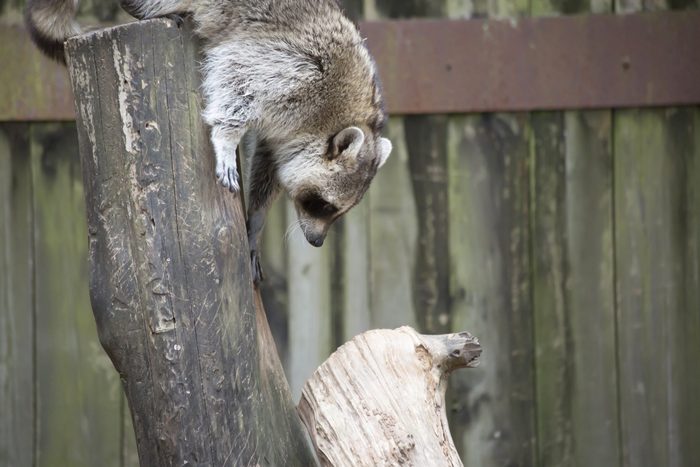
Damaged Tree Branches
Raccoons are excellent climbers. They can scurry up tree to seek shelter or food, or just because they enjoy it. Like a dog, raccoons will mark trees with urine.
“Damage to the tree itself could show where the raccoons have been climbing up and down,” according to AAAC Wildlife Removal. “Look for smooth bark that looks like it’s been worn away by claws, or branches that have broken off.”
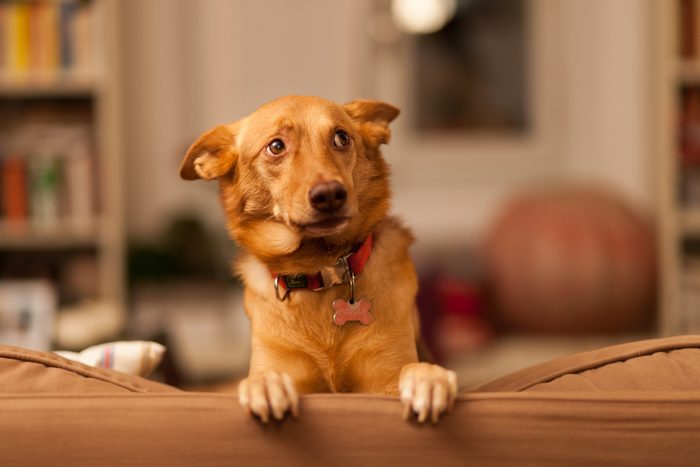
Changes in Pet Behavior
Dogs and cats will likely be aware of a raccoon long before their owners because of their excellent hearing and predatory instincts. Anxious pets will stare at ceilings or crawl spaces if they detect scurrying, avoid certain parts of the home, or simply whine. That’s your cue to look for the signs of raccoons mentioned above.

